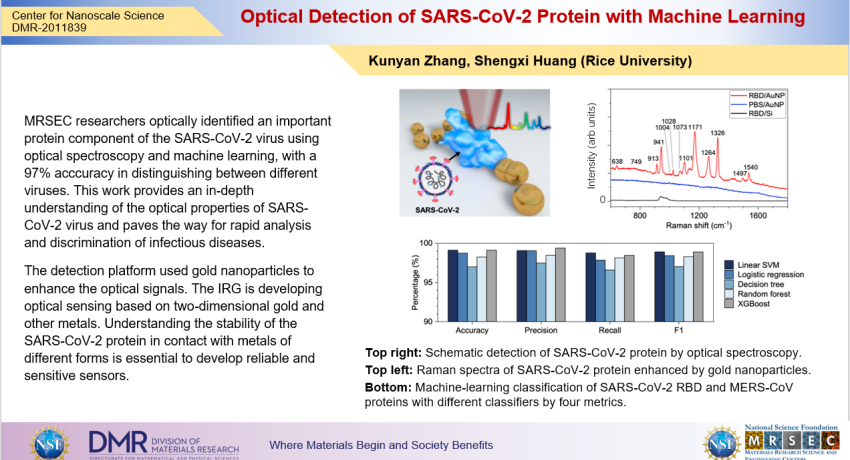What Has Been Achieved: MRSEC researchers studied the fundamental properties related to the optical identification of receptor-binding domain (RBD) of SARS-CoV-2 spike protein, a key component of viral infection. The Raman modes of SARS-CoV-2 RBD were captured by surface-enhanced Raman spectroscopy (SERS) using gold nanoparticles (AuNPs). The Raman spectra of two RBDs can be easily distinguished using machine learning algorithms with accuracy, precision, recall, and F1 score all over 95%.
Importance of the Achievement: This study offers key insights into the optical properties of SARS-CoV-2 RBD that may facilitate variant surveillance by monitoring the changes in the RBD protein. This analysis approach can be extended to peptides of a wide range of infectious viruses. A further refined SERS-machine learning integrated platform in the future could differentiate SARS-CoV-2 from other viruses rapidly and accurately and can identify new strains of SARS-CoV-2 in the early stages to maintain immunity efficacy.
How is the achievement related to the IRG, and how does it help it achieve its goals? The IRG is developing optical sensing based on two-dimensional gold and other metals. Understanding the stability of the SARS-CoV-2 protein in contact with metals of different forms is essential to develop reliable and sensitive optical sensing.


